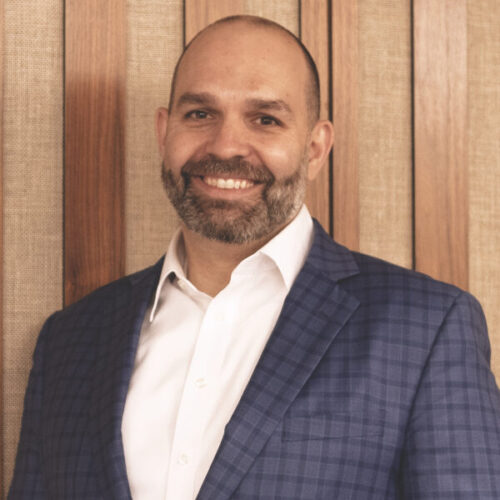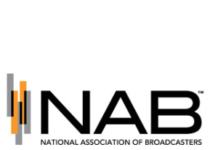
On May 17, 2023, the AM For Every Vehicle Act was introduced in both houses of Congress with the mission of preserving AM radio in automobiles made and sold in the US. Over the past year, we have seen broadcasters, lawmakers, advocacy groups, and the American people come together in support of radio in a way that has seldom, if ever, been seen before.
Today, Radio Ink marks the Act’s anniversary by talking with NAB President and CEO Curtis LeGeyt about the journey that’s been made and the road that remains ahead.
Radio Ink: It’s been one year since the AM For Every Vehicle Act was introduced in Congress. If you could describe the past year, in terms of AM radio, in one word, what would that word be and why?
Curtis LeGeyt: The word would be local. The reason that I say that is that in today’s media landscape, I think this entire initiative and the swift response from members of Congress to the automaker’s potential removal of AM access underscores the appreciation that legislators have for our uniquely local product.
As much as I think we in the media can get obsessed falling over ourselves for the bright shiny objects, the streaming services, social media, et cetera. This should be taken as a real sense that the power of local still very much resonates in Washington, DC, and it’s indispensable to the American people.
Radio Ink: In your fireside chat at this year’s NAB Show, you briefly mentioned the AM Act’s effect on television and other media. How have you seen the fight for AM affecting other branches of broadcasting?
Curtis LeGeyt: I think this AM issue really allows us the platform to tell the larger story of broadcasting, which is that we are freely available to Americans of all socioeconomic stripes. In times of disaster, we remain on the air as a lifeline when other forms of communication fail. In today’s media environment, broadcast is the medium that is doing locally focused news programming and sports, live and local, in a way no other medium is.
So I think it allows us to remind policymakers and, frankly, remind consumers of the benefits of broadcast, whether you’re receiving it on the AM band, the FM band, or on your television.
Radio Ink: You’re Radio Ink‘s reigning Executive of the Year. The NAB has faced a multitude of issues this past year, but what’s something that you’ve personally learned from the past year in your role leading broadcasters in the AM Act charge that you believe has made you a better leader for the broadcast industry?
Curtis LeGeyt: I think it’s the message of tethering our advocacy to the needs of the consumer. As much as we can talk to ourselves about the ongoing relevance of what we do, that is nothing compared to what we’ve seen on the AM radio legislation, which is 430,000 listeners reaching out to their members of Congress and reiterating the importance of AM radio in their lives and reminding these policymakers of that relevance.
I think sometimes in Washington, DC, we can lose sight of that. We get overly focused on who’s on the other side of our issues, in this case, the auto industry and the consumer technology industry, and what talking points are going to work best to rebut their arguments. But at the end of the day, if your policy tracks where the consumer is, that is going to resonate in Washington, DC, and you’re going to win more than you lose.
Radio Ink: The very latest AM news has come from BIA Advisory Services. This week, they released their list of radio’s top ten highest billing stations of 2023 and AM had a spectacular showing. 1010 WINS was number three and four of the top 10 highest billing stations were AMs. Some have argued that only people out in the sticks are listening to AM, but that clearly isn’t true. WINS, WFAN, and WCBS are in New York, WBBM is in Chicago, and KFI had a big year in Los Angeles. How can radio use this information to its advantage?
Curtis LeGeyt: We’re already getting that information in front of the automakers because sometimes we can assume that others understand exactly what we do on a day-to-day basis – in this case, the enduring popularity of AM radio. The fact that you’ve got 82 million consumers tuning into AM radio every month, it shouldn’t be surprising that the standout stations amongst that group are also going to be the highest billing.
We need to make sure our advertising community understands that. We need to make sure that device makers understand that. We are continuing to be relevant. We are here to stay. And it’s because of that uniquely local focus combined with our reach, right? That gives radio a decided competitive advantage and a listenership that is very, very sticky. We need to do a better job of telling that story ourselves and not assuming that others are going to tell it for us.
Radio Ink: Even outside of AM radio, a lot of those highest billing stations were News/Talk stations, which, of course, is a wheelhouse format of AM. Referencing your NAB Show fireside chat again, you discussed how the NAB is prioritizing getting resources to journalists and newsrooms at every level. The industry is showcasing this success at the very top, but how can we help convert this info into dollars for medium and smaller market newsrooms?
Curtis LeGeyt: On the business side, we need to ensure that advertisers and our business partners really understand the ongoing relevance of what we’re doing that no one else is doing in this media ecosystem. The stations that are truly locally focused, that are providing the fact-based journalism and reporting that serves as a contrast to the misinformation that’s prevalent on social media, are going to do very well. Audiences are going to continue to tune into that. We absolutely need to be screaming that from the rooftops to our advertising and other business partners.
Additionally, as it relates to policymakers, this is an important reminder that AM radio is doing something here that isn’t prevalent in a lot of other areas of media. And as a result, audiences and advertisers are sticking with us and they’re investing in this. And so that’s just a story, again, we need to continue telling.
Radio Ink: One more note about the BIA rankings, WINS and WFAN ended up categorized as FM stations, despite originating on the AM dial, because of their simulcasts. Do you believe that AM stations wanting to get on the FM band via translators and simulcasts and a lot of subsequent rebranding is hurting AM perception in the public eye?
Curtis LeGeyt: Well, my hope is that it’s helping, and what I mean by that is this: we need to be connecting with our audiences wherever they are and through as many mediums as we can. So whether that’s on the AM band, the FM band, whether it’s through our digital assets, obviously our trusted personalities, the more that they are authentically engaging with their audiences through all of these different connections, the more relevant the programming is going to be.
The point with regard to AM radio, though, is not every station has the economic ability to necessarily simulcast on FM or to have a digital stream. Obviously, from a technical perspective, that’s not always going to be possible in every market. And so, we’ve got to ensure that there is a viability for those stations that rely on the AM band to reach their audiences to continue to do that.
Regardless of whether a station is using those other touch points to engage their audiences, AM radio is always going to have more geographic reach, and it is always going to be available at times when other forms of communication go down. We focus so much on the power of radio in times of emergency, but I think with AM specifically, it’s important to recall here that when FEMA’s putting out those emergency alerts, there are 70 plus Primary Entry Points for those alerts that go through AM radio stations and are then daisy-chained to the rest of the country.
So whether you’re getting an emergency alert through an FM station or you’re getting it through a television station, it, for the most part, has originated through AM. It’s critically important in times of emergency that we keep AM viable.
Radio Ink: Today we celebrate a year since the AM For Every Vehicle Act was introduced in Congress, but we’ve been waiting for the act to be scheduled for a Senate vote since July. A lot of that wait is tied to securing the majority in the House and the supermajority in the Senate. Once that vote gets scheduled, should we anticipate a rapid process? Can you speak to any plans on that front?
Curtis LeGeyt: Well, you touched on two milestones, and I want to slow down to emphasize them. The fact that we now have more than 60 co-sponsors in the US Senate – we have 61 as of this interview – is an extremely important threshold because it demonstrates to Senate leadership, in this case, Leaders Schumer and McConnell, that this issue can overcome any filibuster. And by the way, this is just the number of senators co-sponsoring the legislation. Obviously, the amount of support for the legislation is much broader than that, but it’s an important threshold to signal this bill can overcome any procedural hurdle in the Senate.
In the House, while we have slowly worked to garner support amongst the majority of the chamber, we’re currently sitting at 252 co-sponsors. That, in our view, is what has really driven this committee action. The chair, Cathy McMorris Rodgers, has been very clear on this. She wanted to give the automakers the opportunity here to do the right thing, to respond to the congressional concerns raised by the more than 100 members of the House that initially wrote to them on this AM radio issue last year, and they haven’t moved off of their position.
As a result, the House Energy and Commerce Committee is now taking up this bill. They held a legislative hearing last month, and we expect that they are going to move the bill in committee over the coming weeks here. That’s extremely significant because what I think it then demonstrates to leadership on the House side is that not only do you have a majority of the chamber co-sponsoring the legislation, but the expert committee has also analyzed it.
I think all of this puts us in a really positive position to get floor votes on this bill in this Congress.
Radio Ink: There’s a lot of positivity and optimism in the air, but obviously the deal isn’t yet done at this stage. How can those reading stay involved in the fight to keep AM in cars? What do you and the NAB need right now from broadcasters on this issue?
Curtis LeGeyt: We absolutely cannot take our foot off the gas here. In fact, we need to be accelerating because floor time, especially in the United States Senate is precious. So it’s going to require continued pressure from listeners across the country, reminding their members of Congress that, yes, you have a bill that has passed out of committee in the Senate. Yes, you have a bill that is working its way through committee in the House. But that doesn’t mean the work is done.
The work is done once this bill has actually been enacted into law. And so we have a landing page for Depend on AM, that I would encourage all of your readers to visit. It has tools to engage with your members of Congress and remind them of the importance of this issue and Congress taking up this bill and getting it passed this year.









